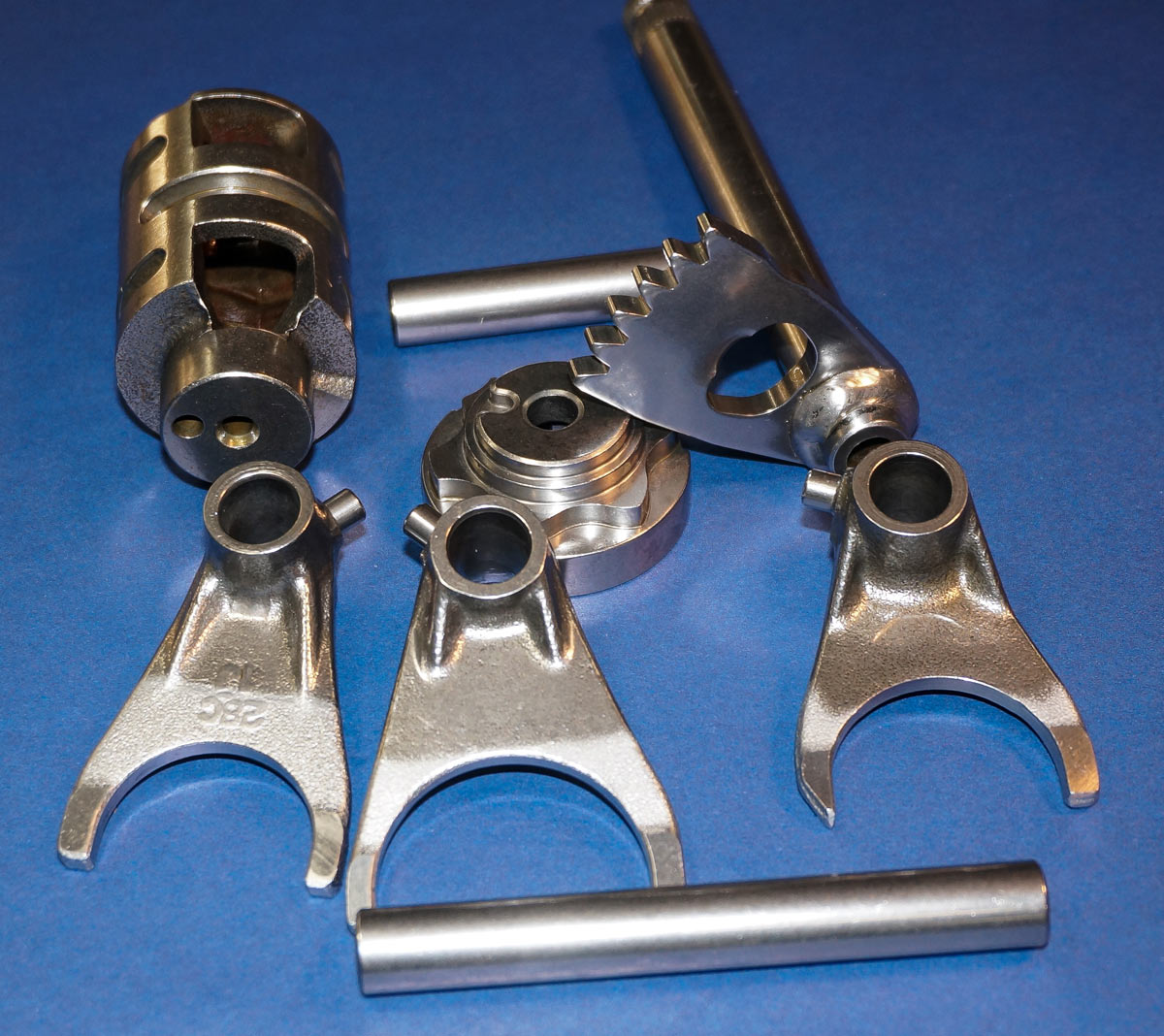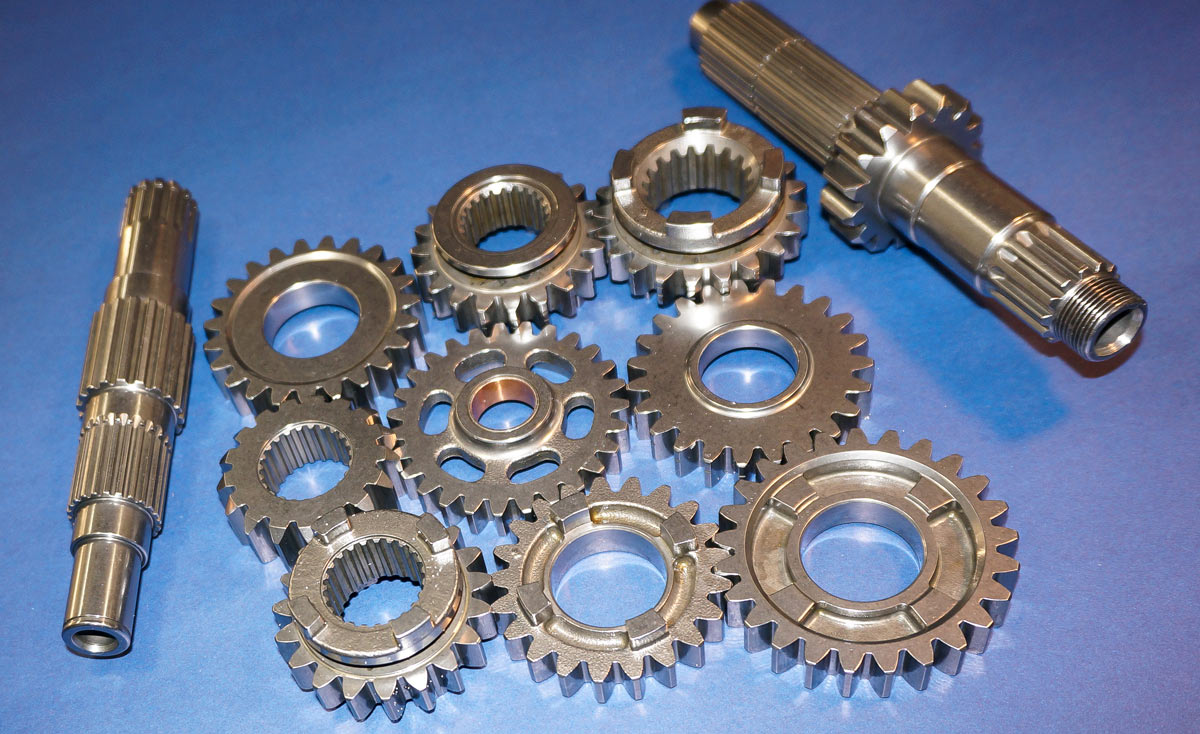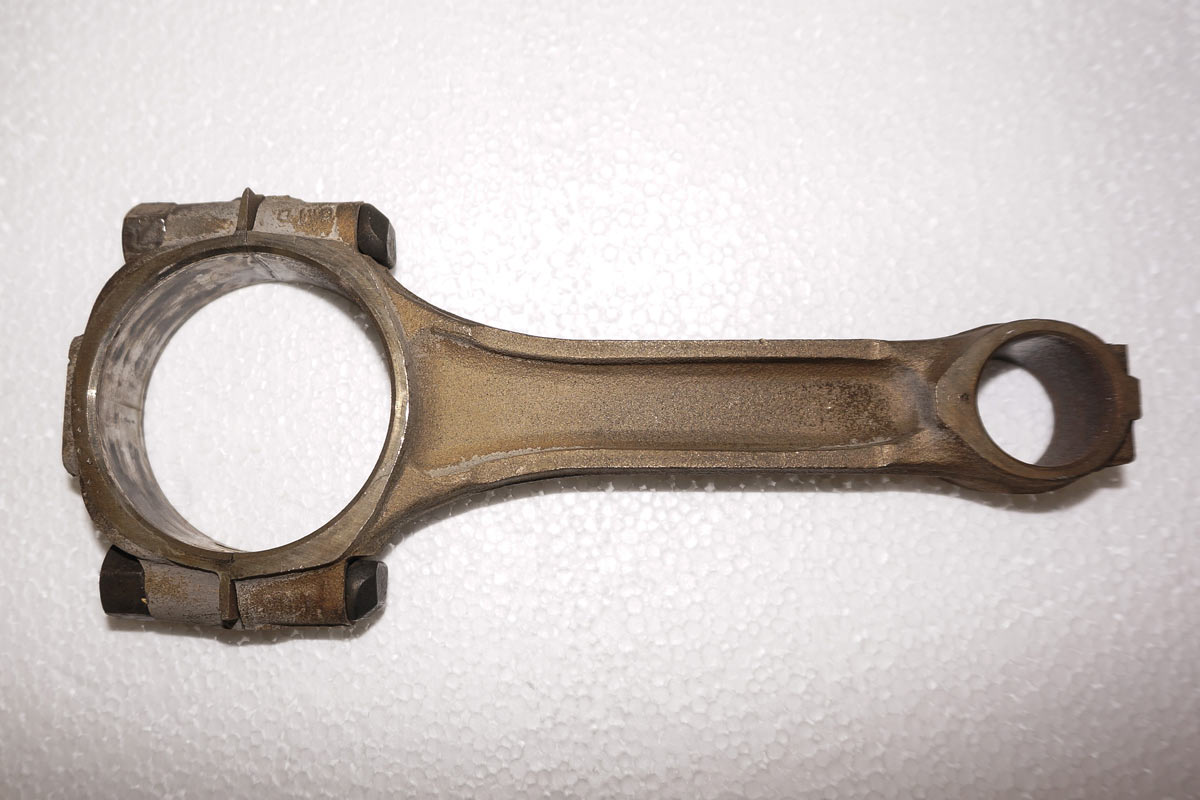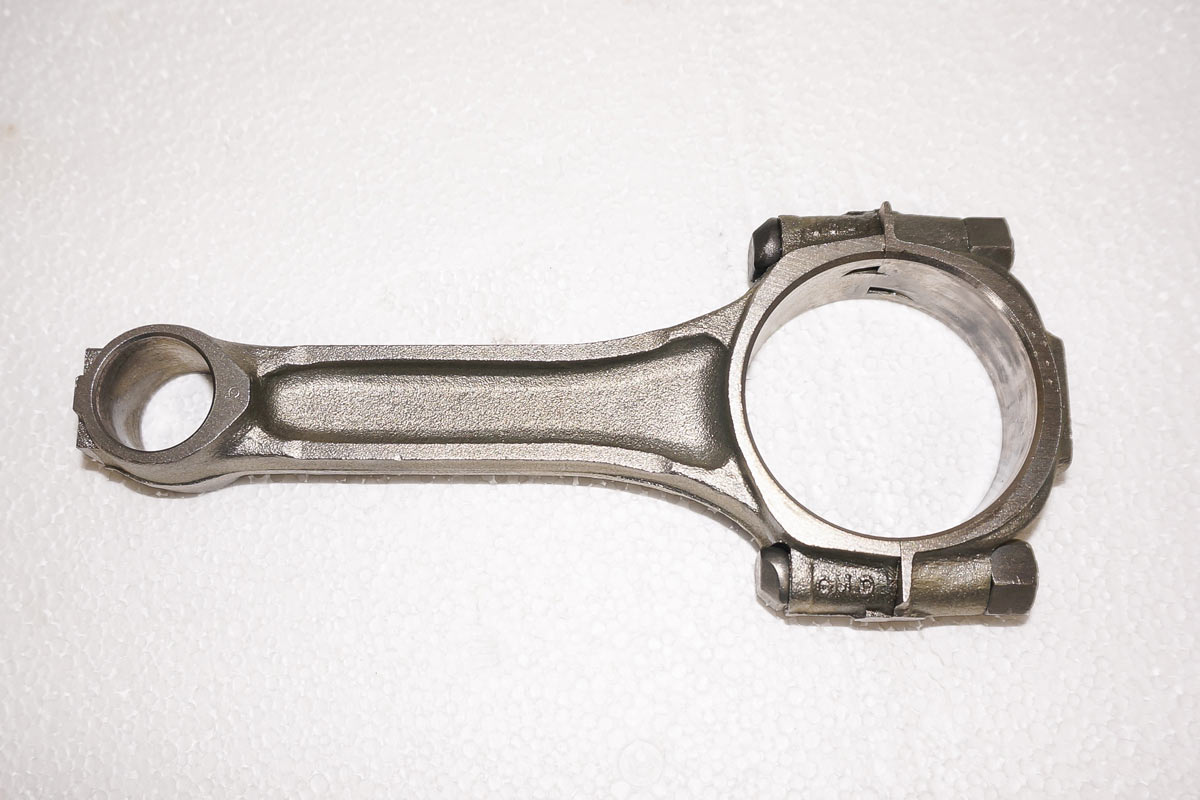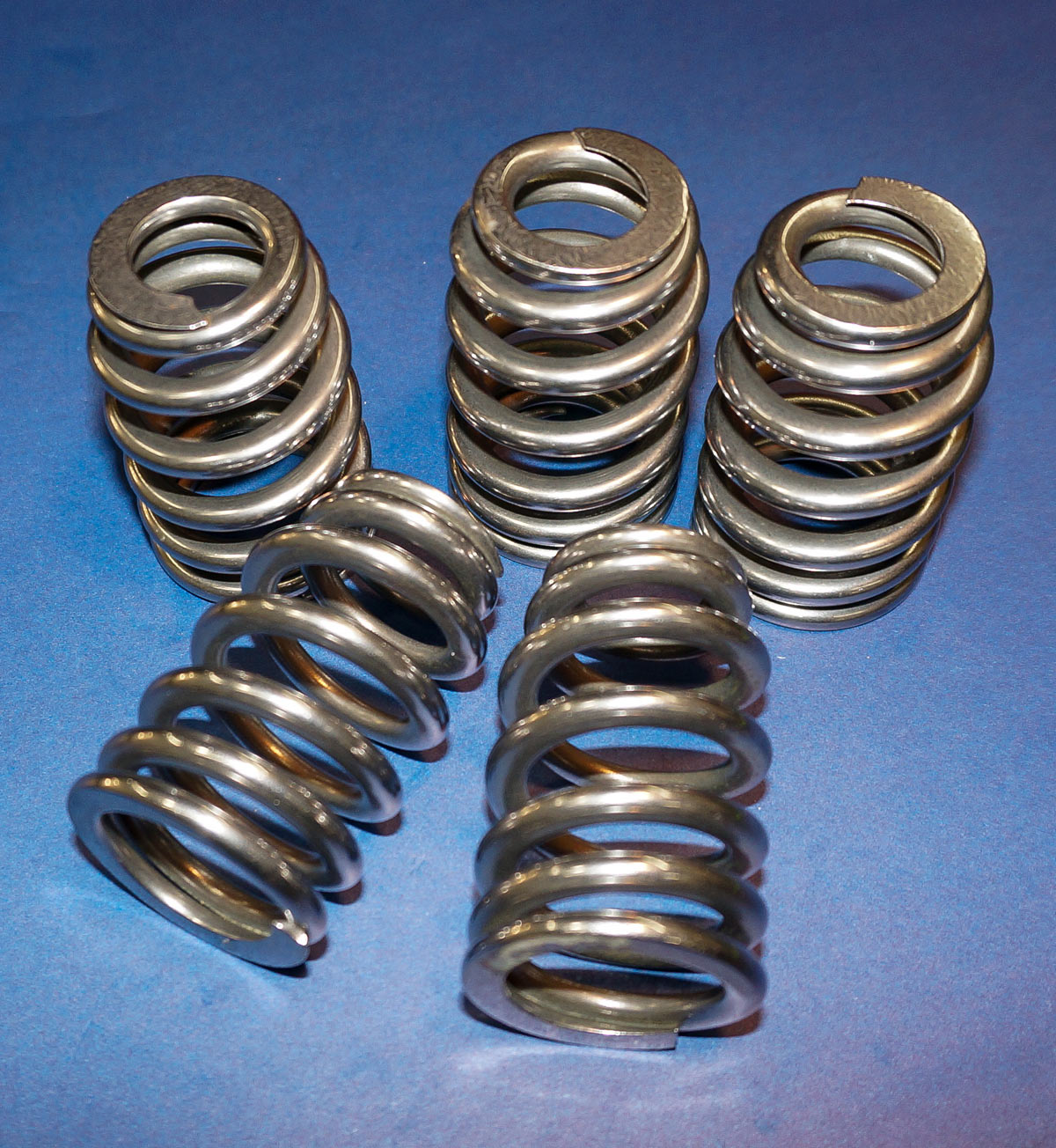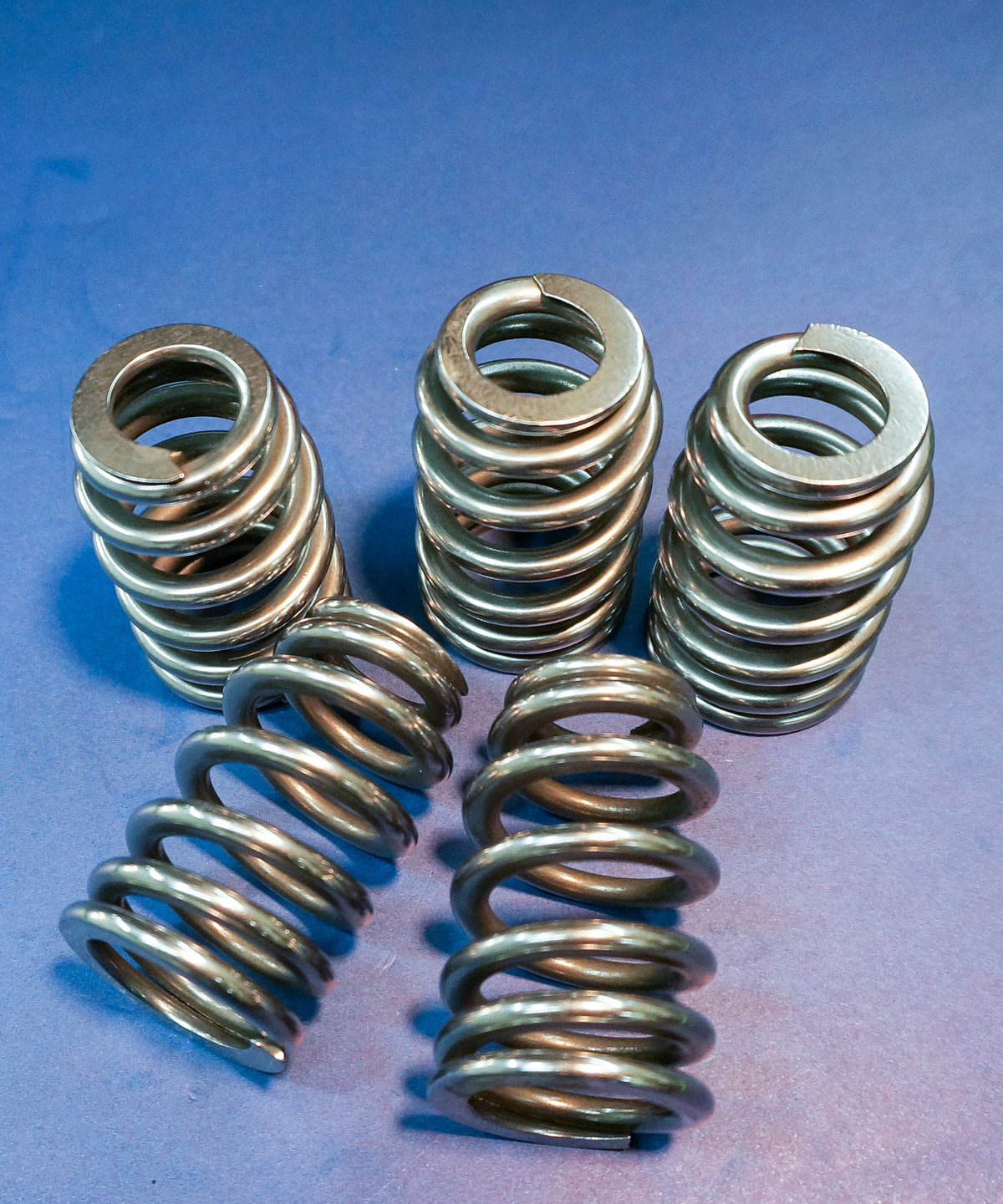Isotropic Super-Finishing
The term isotropy means uniformity in all orientations. As such, Isotropic Super-Finishing is the process of creating a uniform, non-directional (isotropic) finish on a metal surface. The process produces a uniform mirror-like finish on hardened steel parts that reduces friction, contact fatigue and stress risers. The mirror-like finish promotes increased lubrication retention and heat transfer, resulting in increased durability; reduced vibration, temperatures and noise; and improved power production. Isotropic Super-Finishing technology is especially beneficial when used on parts operating in high-contact loading metal-to-metal environments, such as crankshafts, camshafts, valvetrain components, and transmission and drivetrain gears.
Isotropic Super-Finishing, often called CASF (Chemically Accelerated Surface Finishing), is performed by placing hardened steel parts in a vibratory bowl that contains ceramic media of various sizes and shapes along with a chemical additive. A two-step process then takes place. During the first step, called refinement, the bowl’s vibratory action is used to generate a chemical interaction between the surface of the part and the ceramic media. The second step is the burnishing process, which produces a superior chrome-like finish.
Although Isotropic Super-Finishing leaves a polished-like finish on the component, it offers many additional advantages over other popular finishing processes such as cryogenics and surface coatings. For instance, the vibratory process removes stress risers created during manufacturing. Moreover, the uniform mirror-like finish reduces friction, vibration and noise while improving lubrication retention and heat transfer.
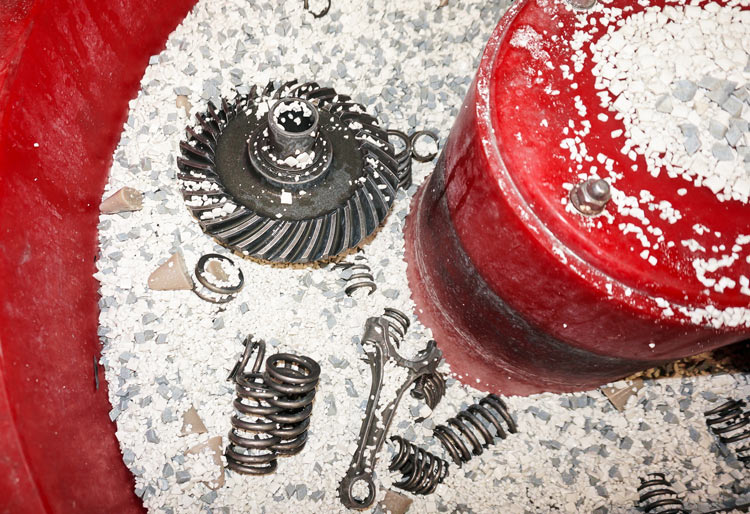
Isotropic Super-Finishing is widely used in various industries, including motorsports, powersports and marine racing. It is also applied extensively in the general automotive and firearms industries.
Isotropic Super-Finishing Benefits
- Reduced Surface Stress
- Reduced Friction
- Improved Durability
- Reduced Vibration, Noise and Wear
- Increased Heat Transfer
- Improved Oil Retention
- Reduced Lubrication Temperature
- Reduced Break-in
- Extended Component Life
- Low Surface Roughness and Improved Surface Finish
- Improved Efficiencies for Improved Performance
Isotropic Super-Finishing Applications
- Transmission gears and shafts
- Drivetrain Gears
- Camshafts
- Valvetrain Components – Rocker Arms, Valve Springs, Chains, Sprockets
- Boat Props and Gears
- Firearm Components
Isotropic Super-Finishing FAQs
1) What types of metal does ATSF isotropic super-finish?
ATSF isotropic finishes carbon steels and stainless steels.
2) Can bearings be isotropic finished?
We do not isotropic finish any bearings.
3) Can automotive or utility side-by-side CV joints be isotropic super-finished?
Yes they can, but they must be fully disassembled by the customer.
4) Can ring and pinion gears be isotropic super-finished?
Yes they can. And customer feedback indicates the processed assemblies can be set up much tighter.
5) Can vintage engine parts be isotropic super-finished?
Yes. In fact, vintage components are often manufactured from high-quality base metal that produces an outstanding “like new” look when isotropic processed.
6) I have heard that isotropic super-finishing can be performed using either a chemical liquid or paste. What determines which one is used?
One determining factor is the base metal alloy. ATSF has been performing isotropic super-finishing for over 6 years and relies on its experience to determine which is the best process to use. The cost is the same for either product.
7) What is “REM” isotropic finishing?
REM is a trademarked acronym for REM’s specific isotropic finishing process. When isotropic surface finishing is done properly, the end results are the same.
8) During isotropic finishing, how are critical areas such as rod journals protected?
ATSF masks off such critical areas. This is an extra-charge service. Request a quote.
9) Does isotropic super-finishing improve the shifting of new and vintage automotive and motorcycle transmissions?
The answer is yes to both automotive and motorcycle transmission shifting. ATSF has received much positive feedback about improved up-shifting and down-shifting of automotive and motorcycle transmissions after the isotropic super-finishing of transmission gears.
10) How much material is removed during the isotropic super-finishing process?
Material loss is minimal and is measured in Microns or one millionth of an inch.
11) Can cam chains and sprockets, and primary chains and compensating sprockets be isotropic super-finished?
Yes, we commonly isotropic super-finish these components. We do all types of chains and sprockets. Interestingly, processed cam chains also result in less wear on plastic cam chain tensioner pads.
12) Can springs be isotropic-super-finished?
Yes. For high-performance applications, we use isotropic super-finishing for stress relieving valve springs. In fact, most springs can be isotropic super-finished.
13) Can ATSF disassemble gears and other components from transmission shafts or drivetrain/engine components?
Yes we can. Either the customer can completely disassemble the transmission components before shipping them to us, or we a perform the disassemble for an additional charge.
14) Can boat props and gears be isotropic finished?
Yes, we have performed isotropic super-finishing for some of America’s top boat racers.
15) Can firearm components be isotropic finished?
Yes. Carbon steel and stainless steel firearm components can be upgraded with isotropic super-finishing for reduced friction and smoother functioning. Common components include internal trigger assemblies, bolt carriers, barrels, frames and slides. All components must be disassembled by the customer.
16) Are there any detrimental affects caused by isotropic super-finishing?
If the isotropic super-finishing process is applied correctly, there should not be any detrimental affects.


